Table of Contents
Curative petition in India
This article was written by Ilashri Gaur and has been further updated by Stuti Mehrotra. This article deals with all the aspects of the curative petition, consisting of its history in India, grounds for a curative petition, guidelines for filing a curative petition, the procedure for filing a curative petition, related judicial precedents, and other recent developments on the discussed topic. This article also delves into the details of where the powers for a curative petition are provided, the circumstances and cases that led to the filing of a curative petition, and the circumstances under which a curative petition may be filed. This article also deals with the power of the Supreme Court of India on the curative petition.
Introduction
A curative petition is a legal remedy available after a review petition against a final conviction by the Supreme Court. Constitutionally, a final ruling of the Supreme Court can typically be challenged only through a review petition, which is limited to procedural grounds. However, curative petitions serve to accredit grave miscarriages of justice. Its main aim is to prevent miscarriage of justice and deter abuse of the legal process. However, these petitions are typically decided by judges in chambers. The guidelines or principles governing curative petitions were established by the Supreme Court in Rupa Ashok Hurra vs. Ashok Hurra & Anr. (2002) which will be further established by the author in the article.
Consider a scenario in which you have been convicted of murder and consequently imprisoned. In such a situation, what is the recourse available to you for self-protection? One possible course of action available is to file a curative petition. It is essential to address several pertinent questions that may arise, such as: What necessitates a curative petition? How does this petition help? Are the fundamental rights insufficient to safeguard an individual against any form of injustice?
Let us understand a curative petition in detail.
What is a curative petition
A curative petition is a way to ask the court to review or revise the decision even after a review petition is dismissed or used. The court has been very aware of the use of such a petition.
There is a Latin maxim used by the court, “Actus Curiae Neminem Gravabit,” which means that an act of the court will prejudice no one. The court should pass an order ensuring that the interests of none of the parties are harmed. The maxim becomes applicable when the court is under an obligation to undo a wrong done to a party by the act of the court itself.
In the Constitution of India, we have been provided with different types of rights, like the right to education, the right to dignity, and the right to life, but like the example given above, we can say that there is no meaning to rights until and unless they are protected. To understand it in more simple terms, let us take an example, whenever we buy any jewellery, the first thing that we keep in mind is safekeeping. Similarly, constitutional remedies are available for the protection and enforcement of fundamental rights.
Objective of curative petition
Curative petitions aim to prevent miscarriage of justice and discourage abuse of the legal process. Article 147 of the Constitution of India serves a limited purpose to clarify the reference regarding any substantial question of law.
Curative petition under the Constitution of India
The curative petition in India has relevance with respect to Article 137, Article 145, and Article 147 of the Constitution of India. According to Article 137, the Supreme Court has the power to review any judgement or order passed by it. Article 145 of the Constitution provides for rules of the court i.e. subject to the provisions of any law made by the Parliament, the Supreme Court may from time to time with the approval of the President make rules for regulating the practice and procedure of the court. Also, according to clause (3) of Article 145, in any case involving a substantial question of law as to the interpretation of the Constitution, the number of judges should be five. Article 147 of the Constitution of India serves a limited purpose to clarify the reference regarding any substantial question of law.
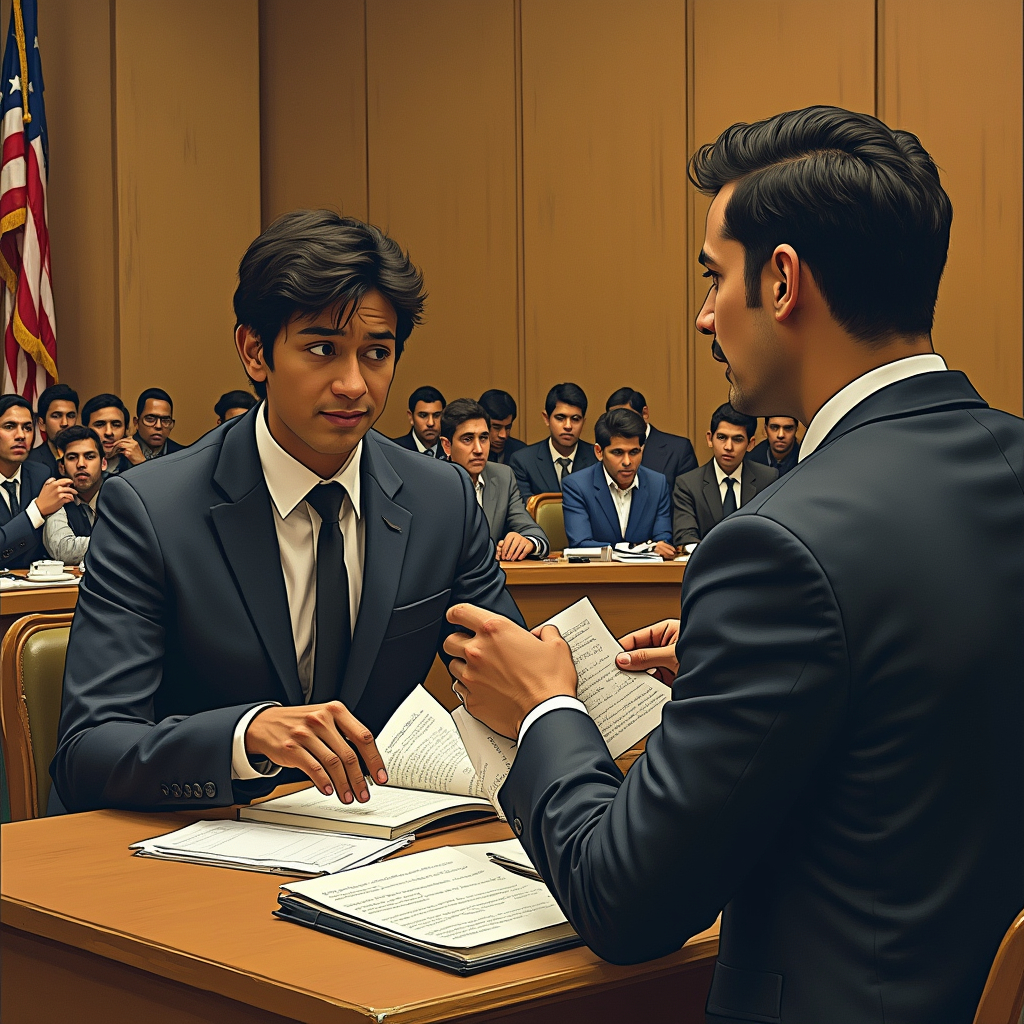
Relation of this petition to the Nirbhaya case
As it was discussed earlier, a curative petition is the final remedy that is available to convicts. Going out with the procedure regarding the potential grounds, the lawyer of the convict provided the argument that “young age and the socio-economic background should be considered as a mitigation factor.”
The advocate challenged the reasoning of the Supreme Court by pointing out reports and studies by law universities and the National Crime Records Bureau stating that a death sentence won’t have any restraining effect on society, which is the reason on which the sentencing by the Supreme Court was based.
Because of the existing media and political pressure on this case from the beginning, it will be interesting to see the adverse result of the petition, which would go down as one of the landmark judgements in the history of this nation’s legal system.
Jurisprudence
The petitioner seeks to allow such an appeal to mitigate or prevent legal processes and to rectify the failures of law in the administration of justice. Consequently, this appeal is regarded as the final or ultimate recourse available for the redress of justice.
It is for the most part, not permitted to occur in an open court and it is heard in the workplace of the appointed authority. It is uncommon that the equivalent might be heard in an open court. The concerned assemblies possess the requisite rights to request bids or audits, grounded in the principles of discourse and pertinent issues.
The constitutional framework governing bids allows parties to exercise their rights in the highest court of the nation. When the choice is given by the Supreme Court of India, the equivalent might be viewed as last and authoritative. The reasoning behind this concept is rooted in the Latin proverb “interest reipublicae ut sit finis litium”, which suggests that, in the interest of society as a whole, it is important to reach a definitive conclusion after a matter has achieved its final result.
In light of a legitimate concern for equity, the framers of the Constitution embedded Article 137 of the Indian Constitution, which permits the Supreme Court to review its own judgements and orders passed.
The inquiry raised concerns about whether the parties felt that justice had not been served even after the appeal for correction. The primary objective of the judiciary is to ensure that the provisions of the law are properly applied, as any miscarriage of justice can be detrimental to society at large. This inquiry is considered both reasonable and fair.
History of curative petition in India
The concept of a curative petition was developed by the Supreme Court of India in the case of Rupa Ashok Hurra vs. Ashok Hurra and Anr (2002). This measure was intended to address miscarriage of justice and the abuse of the judicial process in the context of marital disputes.
In this case, after the dismissal of the review petition, a question arose as to whether an aggrieved party was entitled to give any relief against the final order of the Supreme Court. Also, in this case, the Supreme Court said that to prevent and rectify a miscarriage of justice, it is necessary to reconsider its judgements in the exercise of its inherent powers. To address this need, the court has come up with a term known as ‘curative petition.’ In a curative petition, the petitioner must present grounds previously raised before the court but not adequately addressed.
From that point onward, the curative petition is reviewed by the three senior-most appointed authorities, the adjudicators, who convey the legitimate judgement. For recording the curative petition, there is no time limit. This is ensured under Article 137 of the Indian Constitution, which says that laws and rules are made under Article 145 of the Indian Constitution. To put it plainly, it implies that the Supreme Court has the ability to review any judgement articulated by it.
Pathway to curative petition
Curative petition is a term coined by the Supreme Court in the case of Rupa Ashok Hurra vs. Ashok Hurra. This was an extraordinary special jurisdiction carved out by the Supreme Court under its inherent power in this case in 2002. Normally, one files a petition in the Supreme Court challenging the High Court’s order, and then against the order of this petition a review petition is filed. Eventually, in the rarest of the rare cases, as a final resort one may take the path of a curative petition subject to the fulfilment of the conditions prescribed for filing of such petition.
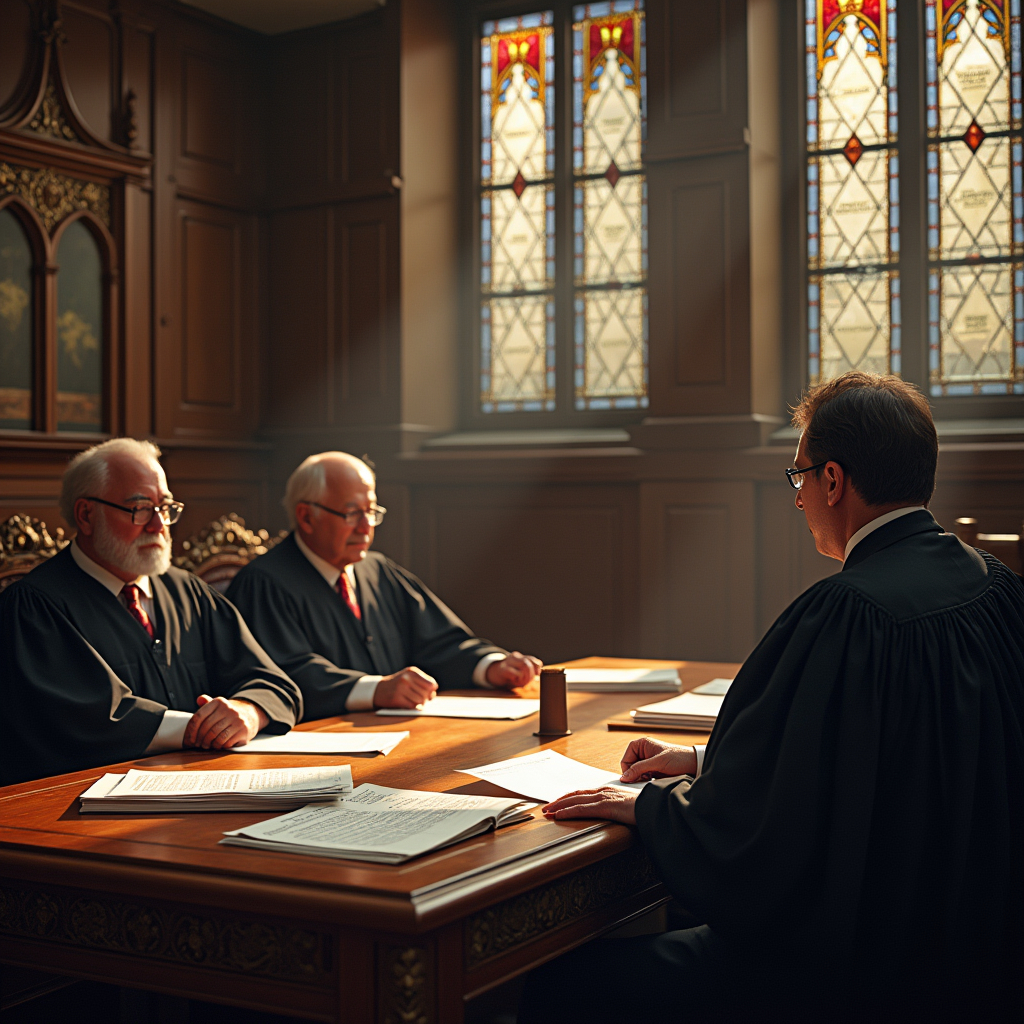
There are two situations for a curative petition when a curative petition can be filed. Firstly, where review was dismissed by circulation, curative can be entertained and it has to follow the normal procedure enumerated below. The other one is when the review was heard in open Court and dismissed, curative shall not ordinarily be entertained.
The normal procedure for a curative petition is that where the review petition was dismissed by circulation and not heard in open Court, is generally that once it is filed, it goes before the top three senior most judges of the Supreme Court of India including the Chief Justice of India plus the judges who dismissed the review petition, if they are available. However, if for the reason of retirement or any other reason, any or all of the Judges who heard the review are not available, then only the three senior most judges of the Court will hear the curative petition.
However, these conditions and guidelines have been made explicit time and again by the Supreme Court of India also with the procedural aspects and the Judges who will be hearing the curative petition.
Conditions for filing a curative petition
The Supreme Court has laid down various specific conditions or procedures that are needed to accept the curative petitions, including:
- The applicant should demonstrate that there was a certifiable infringement of standards of regular equity and dread of the bias of the judgement and the adjudicator that will antagonistically influence him.
- One of the important conditions is that the petitioner will have to specifically mention the grounds that have been taken in the review and that it was dismissed by motion.
- The curative petition must go along with the certification by the senior lawyer relating to the fulfilment of the above requirements.
- It is required that the petition be sent to the three most senior judges and the bench of judges who passed the judgement that affects the petition, if available.
- Additionally, if most of the judges in the above seat concur that the issue should be heard, at that point, it is shipped off to a similar seat beyond what many would consider possible.
- If the petitioner’s plea lacks merit, then the court could impose ‘exemplary costs’ (it means that a huge cost is given to them so that from the next time others would change their way of doing any act) on him.
- It must be rare rather than regular.
- A curative petition needs to be filed within 30 days of the judgement or order.
- Except if there is a particular solicitation for an open court hearing, the therapeutic appeal is normally chosen by decision in their workplaces.
- The bench, at any stage of consideration of the curative petition, can ask the senior counsel to assist it as a friend of the court.
Grounds for rejection

The petition may be rejected if it is found without merit, and in such cases, the court has the authority to impose a penalty on the petitioner. This implies that if the petition does not present a valid or substantial legal argument, the court will not only reject it but also sanction the petitioner with a penalty.
Guidelines for filing a curative petition
As we all know about the famous case of Mukesh & Anr vs. State for NCT of Delhi & Ors (2017) (Nirbhaya case), in which the respondent Akshay, who is also one of the convicts in this case, filed a curative plea in the Supreme Court. The curative petitions serve distinctive purposes, depending on the specific case at hand. In this case, the petition was filed to address a potential miscarriage of justice rather than to seek increased compensation which was the concern in the Bhopal Gas Tragedy case. The Indian government filed a petition to seek a higher compensation amount for the victims of the Bhopal Gas Tragedy. A curative petition represents the last opportunity available to seek redress from the court for an injustice in court after a review petition has been dismissed or exhausted.
The Supreme Court rules of 2013 were amended by the judgement of the Rupa Ashok Hurra Case to implement the judgement passed by the court in the case, particularly regarding the conditions for filing of a curative petition. The provisions for the curative petition were amended through Order 48 of the Supreme Court Rules, 2013, which stipulates the preconditions for filing a curative petition. The guidelines established to file a curative petition follows:-
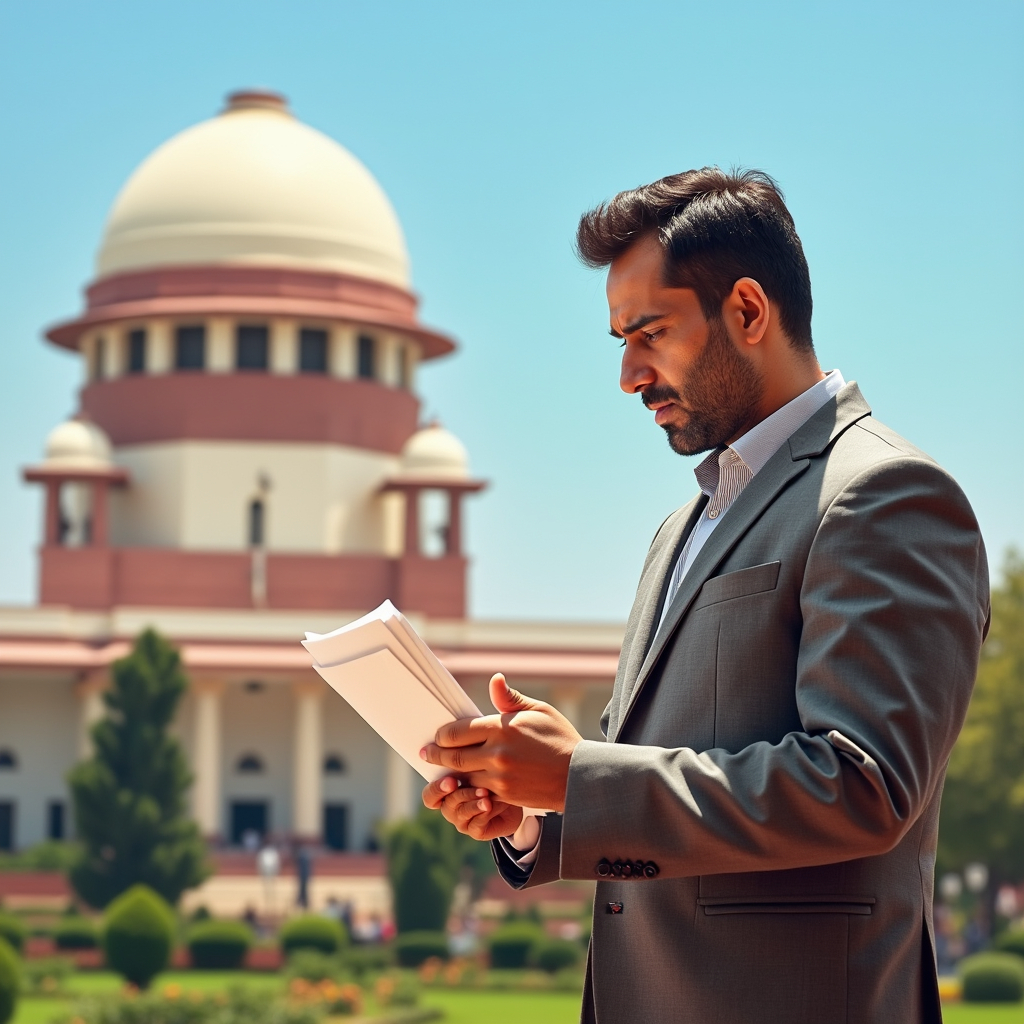
- Grounds for a curative petition: The grounds mentioned in the curative petition must have been raised in the review petition, which must have been dismayed by circulation.
- Initial certification by a senior advocate: The petition must include a certification from a senior advocate, emphasising significant reasons for its consideration and highlighting errors in the procedure.
- Certification by Advocate on Record: The Advocate on Record must clarify that the curative petition filed is the first curative petition in the impugned matter.
- Initial review by judges: It is initially reviewed by a panel of the three most senior judges and, if available, the judge(s) who passed the original ruling.
- Hearing: A hearing is scheduled only if there is a majority of judges who find it necessary, preferably before the same bench that passed the initial judgement.
Procedure for filing a curative petition in India
A curative petition is supported by Article 137 of the Constitution of India. According to the article, in matters relating to laws and regulations made under Article 145 of the Constitution of India, the Supreme Court of India has the power to review any judgement or order made by it. A curative petition needs to be made within 30 days from the date judgement is passed. A curative petition may be filed when:
- A curative petition may be filed after the review petition has been dismissed.
- A curative petition may be filed only when the petitioner has established that there was a violation of the principles of natural justice and that he was not given an equal opportunity by the court to be heard before the order was passed.
- It is also required from the petitioner to state or assert specifically the grounds on which the review petition was undertaken and that it was dismissed by circulation, which is in turn certified by a senior advocate.
- It must be rarer than regular, i.e., curative petitions are not like regular petitions like review, revision, or appeal. They should be filed in the rarest of the rarest cases.
- A curative petition must first be circulated to a bench of the three senior-most judges and the judges who passed the concerned judgement, if available. Only when a majority of the judges conclude that the matter needs a hearing should it be listed before the same bench.
- If a request for an open-court hearing is made, then such a hearing is allowed, but a curative petition is decided by the judges in the chamber.
- The bench, at any stage of consideration of the curative petition, can ask a senior counsel to assist as amicus curiae.
- A curative petition is usually decided by the judges in chambers unless a special request for an open-court hearing is made.
- If the petition lacks any grounds for reasonable consideration, then the court could impose “exemplary costs” on the petitioner.
Extent of judicial discretion in the curative petition
The judicial discretion of the curative petition rests with the Supreme Court. The court emphasises that curative petitions should be made in rare cases and reviewed with due care and caution to maintain the integrity of the judicial system.
Special powers of the Supreme Court in the context of jurisdiction
Dispute resolution
The Supreme Court gets exclusive original jurisdiction under Article 131 of the Constitution of India in disputes between the Government of India and one or more states or between the states themselves. This jurisdiction is exercised in cases involving legal rights, providing a direct forum for the resolution of inter-governmental disputes.
Discretionary jurisdiction
The Supreme Court has been granted the power to grant special leave to appeal through Article 136 of the Indian Constitution from any judgement, decree, determination, sentence, or order in any cause or matter passed by any court or any tribunal in India, but this power does not apply to military tribunals and court martials. The Supreme Court exercises this discretionary power to address significant legal questions, prevent injustice, and maintain uniformity in the interpretation of laws.
Advisory jurisdiction
Under Article 143 of the Constitution, the Supreme Court has advisory jurisdiction, where the President of India can refer specific matters to the court for its opinion. This allows the court to provide guidance on important legal questions or issues of public interest referred to by the President. The court’s opinion in this article is not binding but holds significant persuasive value and helps clarify complex legal issues.
Contempt proceedings
Under Article 129 and Article 149 of the Constitution of India, the Supreme Court has the authority to punish for contempt of court, including contempt of itself, either suo moto or petition by the Attorney General or any individual. This authority ensures that the dignity and authority of the judiciary are upheld, and any action undermining the court’s functioning or disrespecting its orders is adequately addressed.
Differences between review petition and curative petition
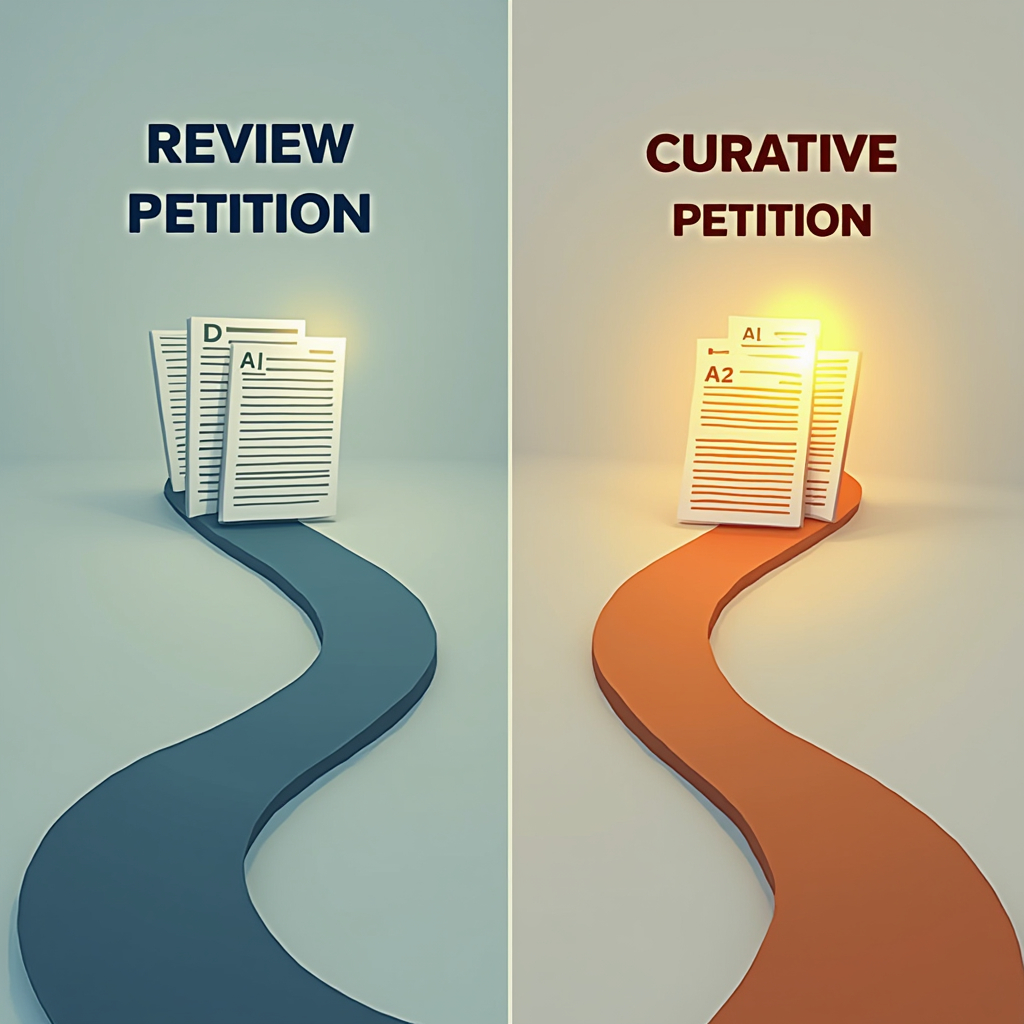
A review petition means that a binding decision of the Supreme Court can be reviewed in this petition. The parties to any order of the Supreme Court that contains an obvious error can file a review petition. In this case, the court will not take fresh stock, they will just correct the errors.
Whereas the curative petition is considered the last source, even after the review petition, if the aggrieved party wants to revise the decision of the court or the judgement, then they file a curative petition, which is not normally given during an open court hearing. It is also supported by Article 137 of the Indian Constitution.
In other words, we can say that the main difference between the review petition and the curative petition is the fact that the review petition is inherently provided in the Constitution of India, whereas the emergence of the curative petition is in relation to the interpretation of the review petition by the Supreme Court, which is provided in Article 137.
| Basis | Review petition | Curative petition |
| When filed | Can be filed after the final decision of the Supreme Court. | Can be filed even after the review petition after the final conviction. |
| Provided in | It is inherently provided in the Constitution of India. | A curative petition is in relation to the interpretation of the review petition by the Supreme Court under Article 137. |
| Filed for | Correction of any obvious error in the order by the Supreme Court. | Is it filed by the aggrieved party if they want to revise the decision of the aggrieved party. |
Important judgements
Rupa Ashok Hurra vs. Ashok Hurra & Anr (2002)
Facts
In this case, the Supreme Court’s honourable judge, Syed Shah Mohammed Quadri, conducted a series of inquiries to determine whether an individual who has been oppressed is eligible for assistance in challenging a final judgement of the court. The inquiry is relevant after the dismissal of a review petition, which may be filed under Article 32 of the Constitution or other applicable provisions. Article 124 of the Indian Constitution builds up the Supreme Court of India in a setting that indicates its ward and controls and empowers Parliament to give it. Since the power of this court under Article 32 of the Indian Constitution is summoned in these writ petitions, solutions for the usage of rights are mentioned below:
- The option to move the Supreme Court by suitable procedures for the requirement of the privileges of basic rights is ensured.
- The Supreme Court has the ability to give requests or writs, whichever might be fitting for the authorisation of any rights given by any gathering.
- Without bias, that can be an influence on the Supreme Court, considering point (1).
- With due process of law, Parliament entitles any other court to exercise within the local limits of its jurisdiction any power that is exercisable by the Supreme Court.
- Under this article, the right guaranteed will not be suspended except if it is not provided by the Constitution.
Issues
The main question before the five Judge Constitutional Bench was to recognize if a curative petition is a final remedy to reconsider the review petition which was dismissed.
Judgement
It was held by the Supreme Court that the appointed authorities have fundamentally analysed the nature and the chronicled foundation of writs in India, just as English laws do. It was determined that a High Court cannot issue a writ to another High Court, nor can a division or bench of the High Court issue a writ to a different division or bench of the same High Court. When a review petition has been dismissed then a curative petition can be filed before the Supreme Court as the ultimate remedy.
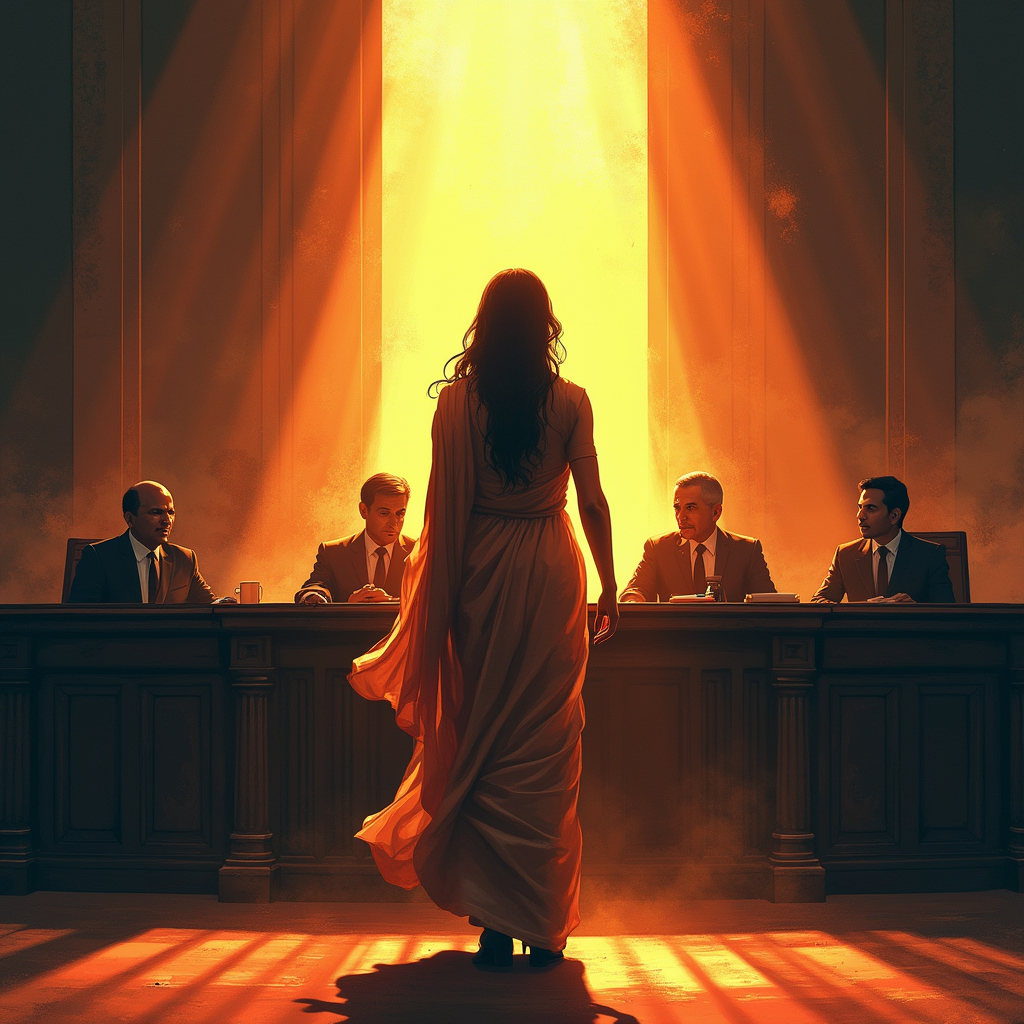
National Commission For Women vs. Bhaskar Lal Sharma (2010)
Facts
In this case, the review petition was dismissed and the respondents came to the court by way of criminal appeal. The said petition was dismissed by the two judge bench upon the fact that there was no case under Section 498A or 406 of the I.P.C. against one of the respondents and the other respondent should only proceed with Section 406 of the I.P.C. the petitions of the aggrieved were dismissed and the present petition was filed by the National Commission for Women.
It was submitted by the aggrieved that the manner in which the appeals had been heard and disposed of, quashing the summoning order at the very initial stage was also improper since the trial was not even conducted and evidence was yet to be adduced in the matter.
Issue
The main issue was to decide whether the matter was disposed of in the right manner or without the party the chance of being heard and also whether they were dealing with a statutory right or constitutional provision.
Judgement
The curative petition was allowed by the Supreme Court which was filed by the National Commission for Women. It was also held that as far as the question regarding making out of a case under Section 498A I.P.C. is concerned, it has to be kept in mind that the appeals were against the initial order summoning the accused to stand trial. Accordingly, it was too early a stage in the view of the Supreme Court, to take a stand as to whether any of the allegations had been established or not.
Naresh Shridhar Mirajkar vs. State of Maharashtra (1966)
Facts
In this case, the writ examined by the Supreme Court of India has tested an oral request of the High Court of Bombay. It has been proposed that the High Court may issue a writ directing this court, as well as another High Court and a designated authority or judicial seat, while the Supreme Court could issue a writ to another adjudicator or judicial seat.
Issues
The petitioners challenged the validity of the impugned order on several grounds urging that the fundamental rights guaranteed under Article 19(1) were violated. The main question was whether the petitioner’s husband was an evacuee or not and whether his property was evacuee property or not.
Judgement
Subsequent to hearing both gatherings, the court held that Article 32 under the Indian Constitution can’t be conjured and tested a last judgement passed by this court in the wake of depleting the final retreat given under Article 137. It was also held that the High Court cannot issue a writ to the Supreme Court because writs are issued in a descending manner, from higher to lower courts. Similarly, the High Court can’t give a writ to another High Court. In the context of the nation’s legal practice within the High Court, it was determined that the writ had been improperly issued.
Navneet Kaur vs. State of NCT Delhi (2014)
Facts
In this case, the petitioner was sentenced to death and his conviction was upheld by the High Court of Delhi. Thereafter, the petitioner filed a curative petition to challenge the sentence imposed upon her and argued that her death sentence should be commuted to life imprisonment on the grounds of her mental illness and the prolonged delay of her mercy petition. The curative petition in this case was also filed in recognition of the increasingly unsustainable judicial demand for the death penalty in light of the severely inconsistent application of its imposition by the court.
Issues
While deciding a mercy petition, the Bench was simultaneously called upon to decide a specific issue which is whether there is rationality in distinguishing between an offence under the Indian Penal Code, 1860 and the Terrorist and Disruptive Activities (Prevention) Act for considering the supervening circumstances for commutation of death sentence to life imprisonment.
Judgement
The Supreme Court of India, reviewing her petition, upheld the validity of her arguments and recognised that prolonged incarceration precedes death row, especially for individuals suffering from mental illness, which amounted to inhumane and degrading treatment. Consequently, the Court ruled in favour of Navneet Kaur, commuting her death sentence to life imprisonment.
Therefore, this case led to a significant shift in capital punishment cases. This case set a precedent for considering mental health and delays in the judicial process as critical factors in determining appropriate capital punishment. It also underscored the importance of safeguarding human rights and ensuring justice through curative petitions, thereby upholding the principle of fairness and equity in the Indian judicial system.
Delhi Metro Rail Corporation Ltd. vs. Delhi Airport Metro Express Pvt. Ltd. (2024)
Facts
In this case, in 2008, Delhi Metro Rail Corporation (DMRC) worked with Delhi Airport Metro Express Private Limited (DAMEPL) to construct, operate, and manage the Delhi Airport Metro Express. After several disagreements over safety and operational difficulties, DAMEPL terminated the deal in 2013. This sparked a series of court fights, culminating in an arbitration panel declaring in favour of DAMEPL and forcing DMRC to pay approximately Rs 8,000 crore. However, the Delhi High Court ordered DMRC to deposit 75% of this sum in an escrow account. The government filed an appeal, and in 2019, the High Court overturned the verdict in favour of DMRC. DAMEPL then took the case to the Supreme Court, which initially upheld the arbitration verdict in 2021.

Issues
The main issues involved in the case were whether the curative petition was maintainable and whether this court was justified in restoring the arbitral award which had been set aside by the Division Bench of the High Court on the ground that it suffered from patent illegality.
Judgement
The Supreme Court recently issued a judgement in favour of the Delhi Metro Rail Corporation (DMRC), citing a “fundamental error” in an earlier order. This decision is important in emphasising the importance of curative petitions, establishing legal frameworks for public-private partnerships in infrastructure projects, and demonstrating the court’s willingness to correct errors and maintain justice even after a final verdict has been issued.
Union Carbide Corporation vs. Union of India vs. (1989)
Facts
This case is also popularly known as the Bhopal Tragedy Case. In this case, the central government filed a curative petition in 2010 for more compensation for the Bhopal gas tragedy victims.
Issues
The validity of the order passed by the High Court of Madhya Pradesh was challenged based on the grounds of whether the settlement amount was justifiable or not and whether the dropping of criminal proceedings against Union Carbide was justified.
Judgement
In 2023, a bench of five judges rejected the petition, stating that the compensation that had been decided previously was sufficient. The bench also emphasised that a curative petition can only be entertained in cases of a gross miscarriage of justice, fraud, or suppression of material facts, none of which were present in the current case.
Conclusion
The special powers of the Supreme Court of India in the context of curative petitions are an essential tool for ensuring justice. They provide a mechanism to correct judicial errors and uphold the principles of natural justice. However, these powers are exercised sparingly to maintain the balance between the finality of judgement and the prevention of miscarriage of justice.
A curative petition is a new concept and judicial innovation in the Indian legal system. It is considered the last and final resort. When we are talking about the context of justice, like in the Nirbhaya case, it gives a drop back for the judges to give the judgement on time. There are so many loopholes in our legal system. It gives a way to escape a criminal’s punishment. The request for a hearing is considered unusual rather than standard. It is typically beneficial if the solicitor establishes that there was a breach of the principle of natural justice and that the petitioner was not heard by the court before the decision was made.
The special powers of the Supreme Court of India, especially in the context of curative petitions and the jurisdiction of dispute resolution, reflect its pivotal role in maintaining justice, ensuring legal uniformity, and preserving the integrity of the judicial system. Through its discretionary, advisory, and contempt jurisdiction, the court upholds the rule of law and provides a robust mechanism for addressing complex legal issues and disputes.
A curative petition should not be confused with a review petition, despite their similarities. A curative petition is submitted only after a review petition has been denied to guarantee that no injustice has happened as a result of the honourable court’s negligence or for other reasons. Typically, Supreme Court decisions are final and cannot be appealed within the court itself. However, review and curative petitions allow aggrieved parties to seek restitution and ensure justice in the judicial system by addressing potential flaws in Supreme Court decisions.
Frequently Asked Questions (FAQs)
What is a petition and what are the types of petition available in India?
A petition is a formal written request made to an official person or body for equitable relief. There are three types of petition available in India namely review petition, curative petition, and mercy petition.
In which case were the basic principles for curative petitions laid down?
Basic Principles governing the curative petitions were established in Rupa Ashok Hurra vs. Ashok Hurra & Anr., 2022.
What is a curative petition?
The curative petition is the last chance available for protection from the compensation of injustice in court after the review petition is dismissed or has been exhausted.
How is a curative petition different from a review petition?
The curative petition is the last chance available for protection from the compensation of injustice in court after the review petition is dismissed or has been exhausted. A review petition means that a binding decision of the Supreme Court can be reviewed in this petition.
References
- https://www.drishtiias.com/daily-updates/daily-news-analysis/curative-petition-1
- https://www.drishtiias.com/printpdf/curative-petition#:~:text=A%20curative%20petition%20may%20be,be%20rare%20rather%20than%20regular.
- https://testbook.com/ias-preparation/curative-petition
- https://pwonlyias.com/current-affairs/filing-curative-petition/
- https://unacademy.com/content/karnataka-psc/study-material/polity/curative-petition/
- https://edukemy.com/blog/curative-petition-upsc/
Students of Lawsikho courses regularly produce writing assignments and work on practical exercises as a part of their coursework and develop themselves in real-life practical skills.
LawSikho has created a telegram group for exchanging legal knowledge, referrals, and various opportunities. You can click on this link and join:
Follow us on Instagram and subscribe to our YouTube channel for more amazing legal content.
 Serato DJ Crack 2025Serato DJ PRO Crack
Serato DJ Crack 2025Serato DJ PRO Crack


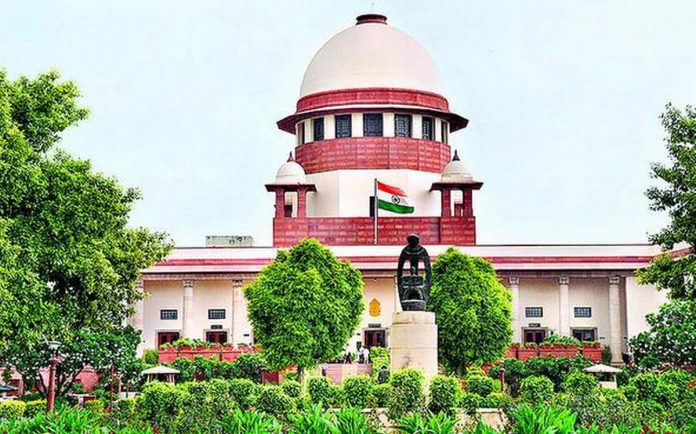







 Allow notifications
Allow notifications



